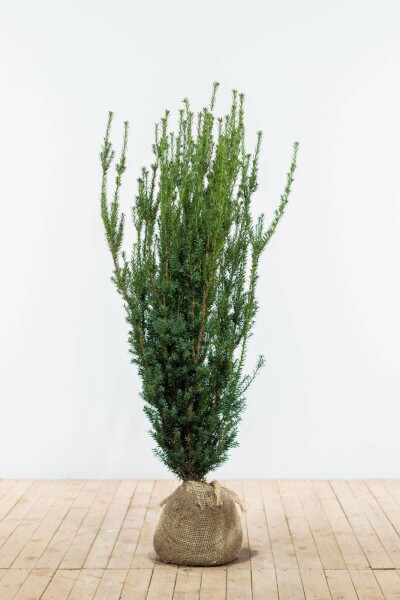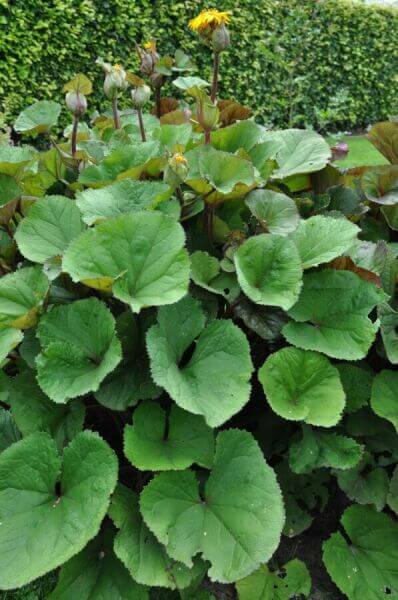Best Hedging Plants For Green Dividers
Boost your garden's allure with lush hedge varieties such as Yew (Taxus), Thuja, Laurel, Photinia, and Bamboo, commemorated for their structural integrity and environmental advantages.
Yew and Thuja provide evergreen protection and winter season strength, while Laurel provides quick growth and broad, aromatic leaves.
Photinia adds seasonal appeal with its lively red foliage, and Bamboo lends a low-maintenance, peaceful atmosphere.
These hedges improve air quality, decrease sound, and develop tranquil, private areas.
Correct planting, spacing, and upkeep ensure energetic development and ecological harmony.
Check out how these lavish ranges can raise your garden's beauty and wellness.
Secret Takeaways
Change Your Garden With Lush Hedge Varieties
- Select Yew for its dense, evergreen development and unparalleled longevity.
- Choose Laurel for its quick development and broad leaves, ensuring quick privacy.
- Choose Photinia for its dynamic seasonal foliage, which turns a striking dark red.
- Utilize Bamboo for a low-maintenance, winter-hardy hedge with aesthetic appeal.
- Space plants 2-3 per meter and prune routinely for optimum development and health.
Popular Hedge Plants
When changing a garden with lush hedge varieties, it's important to consider popular hedge plants such as Yew, Thuja, Laurel, and Photinia due to their distinct qualities and advantages.
Yew (Taxus) is extremely esteemed for its longevity and dense, green development, making it a prime choice for withstanding landscapes.
Thuja is kept in mind for its evergreen foliage and robust winter durability.
Photinia adds seasonal vibrancy with red leaves that darken gradually, producing dynamic visual appeal.
Laurel offers rapid growth and aromatic, broad leaves, perfect for fast personal privacy.
Furthermore, Bamboo is an outstanding choice for ambiance, using a low-maintenance, winter-hardy choice that improves the garden's aesthetic with its elegant, swaying walking canes.
These selections cater to a range of horticultural requirements and choices.
Advantages of Garden Hedges
Garden hedges use a wide range of benefits, making them a valuable addition to any landscape. These natural barriers are cost-efficient to carry out and offer substantial wind security, enhancing air circulation and adding to noise decrease. The dense foliage of hedges like Thuja and Beech ensures personal privacy by obstructing exposure, developing a peaceful and secluded environment.
Hedges also play an essential role in microclimate guideline, offering a stable environment that fosters plant development and reduces temperature variations. Their intricate leaf structures filter toxins, improving air quality and adding to a much healthier garden community.
Moreover, hedges master noise decrease, absorbing and deflecting acoustic waves to lower ambient noise levels. This dual performance of supplying both acoustic and visual personal privacy improves the general tranquility and visual appeal of any garden.
Planting and Upkeep Tips
For a successful hedge, precise preparation of the planting location is essential. Guarantee the soil has appropriate pH and drain to support strong root development.
Space the plants properly for the selected types. Water the hedge frequently throughout its initial growth phase, changing as required with seasonal changes.
Execute a organized pest control and disease prevention technique, utilizing natural or chemical treatments when required. Routinely check for aphids, mites, and fungal infections.
Apply mulch to maintain moisture and suppress weeds. Seasonal pruning promotes dense development and air circulation, vital for plant health.
Following these guidelines will assist you cultivate a lively, properly maintained hedge that boosts the appeal of your garden.
Spacing and Cutting Guidelines
Spacing and Cutting Standards
Appropriate spacing and cutting are vital for cultivating healthy, aesthetically appealing hedges. Sufficient spacing ensures each plant gets sufficient nutrients, light, and air flow.
Follow these guidelines for optimal hedge maintenance:
- Spacing: Position hedge plants 2-3 plants per meter to motivate robust growth.
- Pruning Techniques: Regular pruning is vital for keeping preferred hedge height and shape. Cut new growth in summer season and cut back older wood during winter season.
- Seasonal Care: Adjust trimming methods and schedules according to seasonal requirements to ensure plant health.
- Hedge Height: Regularly monitor and trim to keep the wanted hedge height and accomplish uniform visual appeals.
Adhering to these actions will guarantee your hedge grows, boosting both the appeal and performance of your garden.
Picking the Right Hedge
Selecting the Right Hedge
Selecting the proper hedge includes evaluating aspects such as fully grown height, foliage density, and environmental strength. Effective hedge plant choice requires comprehending each types' growth attributes and site-specific versatility.
For instance, Yew (Taxus) provides outstanding durability and dense growth, while Thuja is significant for its winter strength. Furthermore, considering upkeep requirements is crucial; fast-growing types like Laurel or Privet demand routine trimming, whereas low-maintenance choices like Bamboo or Ivy might be more effective for those seeking very little upkeep.
Ecological factors such as soil type, light availability, and moisture conditions ought to likewise assist the choice process. This mindful technique guarantees the chosen hedges will flourish, offering both practical and aesthetic advantages to the garden landscape.
Delivery and Planting Suggestions
To guarantee your hedge plants prosper, they should be delivered by specialized couriers and planted quickly upon arrival.
Follow these necessary steps for successful planting:
- Soil Preparation: Improve the soil with organic matter to improve drainage and nutrient material.
- Planting Depth: Create a trench twice the width and equal to the depth of the root ball.
- Watering Methods: Water completely after planting, keeping the soil consistently moist but not filled.
- Mulching: Use a layer of mulch to keep wetness and reduce weeds.
Consumer Support and Service
Provided the vital role of timely support in horticultural pursuits, our consumer assistance team is available 6 days a week through telephone, email, and social media to provide skilled guidance and promptly address any concerns. Their dedication to quick response times ensures customer satisfaction by dealing with queries associated with plant health, optimal planting methods, and maintenance schedules.

Reaction Time
-------------------
Telephone
Six days a week
Within 24 hours
This extensive assistance system, enhanced by an excellent 9.3/ 10 customer rating, highlights our commitment to improving the gardening experience for each customer.
Often Asked Concerns
The Length Of Time Does It Take for Hedge Plants to Develop?
Hedge plants generally require one to three years to become fully established, with the exact duration varying by types and growing conditions.
Efficient care during this vital duration is necessary for robust development. Constant watering, alert weed control, and proper fertilizer application are critical in promoting strong root advancement.
For example, fast-growing species like Laurel may develop faster, while slower-growing ranges such as Yew may take longer. Persistent maintenance accelerates the facility procedure, resulting in dense and healthy hedges.
What Are the Finest Hedge Plants for Personal Privacy?
The concern of the very best hedge plants for privacy involves examining evergreen and deciduous alternatives.
Evergreen hedges like Thuja, Laurel, and Cypress offer year-round coverage, ensuring constant personal privacy.
On the other hand, deciduous hedges such as Beech provide seasonal privacy, shedding leaves in colder months.
Secret upkeep suggestions for privacy hedges consist of regular trimming, fertilizing in spring, and correct spacing-- usually 2 to 3 plants per meter.
Additionally, constant watering and persistent weed removal are essential for promoting healthy, dense development.
Can Hedge Plants Attract Wildlife to My Garden?
Yes, hedge plants can bring in wildlife to your garden by offering important benefits like shelter, food, and nesting websites, thus boosting local biodiversity. Yew, holly, and laurel are exceptional for attracting birds, while ivy supports a range of insects.
Nevertheless, it is very important to note that there are some drawbacks, such as increased upkeep to handle insects and routine upkeep. Thoroughly picking and preserving hedge ranges can help balance these advantages and drawbacks, ultimately promoting a lively and sustainable community in your garden.
Exist Any Flowering Hedge Plants Available?
Yes, there are flowering hedge plants readily available that can enhance the charm of your garden.
For instance, Elaeagnus, also called Olive Willow, produces aromatic white flowers in the fall, including a touch of elegance.
Photinia, another popular choice, showcases dynamic red leaves that grow into an abundant green, creating a dynamic visual impact throughout the seasons.
To make sure these plants grow, it's important to practice appropriate pruning methods and seasonal upkeep, such as cutting brand-new growth in the summertime and cutting down in the winter season.
These procedures will assist preserve the health and visual appeal of your flowering hedges.
How Do I Avoid Bugs in My Hedge Plants?
To prevent pests in hedge plants, utilize natural insect control approaches and keep proper hedge care. Introduce useful pests like ladybugs, which victimize damaging pests, to create a balanced ecosystem.
Regularly inspect your hedges for signs of infestation and promptly remove any affected parts to prevent the spread. Ensure the health of your hedges by applying balanced fertilizers and offering appropriate water.
Make use of mulching to retain soil moisture and proper spacing to decrease plant tension and promote robust development. These practices jointly assist in lessening bug concerns and keeping a healthy hedge.
Conclusion
In essence, picking the best hedge ranges such as Yew, Thuja, and Laurel can change any garden into a relaxing sanctuary. These plants offer year-round plant, here improve aesthetic appeal, and offer useful benefits like noise reduction and wind protection.
Proper planting techniques, precise spacing, constant watering, and seasonal trimming are important for ideal growth.
Reputable delivery services and expert customer assistance make sure a seamless experience from purchase to planting, making it easier than ever to elevate your outdoor area.
Garden hedges use a plethora of benefits, making them a valuable addition to any landscape. These natural barriers are economical to carry out and provide significant wind protection, improving air blood circulation and contributing to sound decrease. The dense foliage of hedges like Thuja and Beech ensures privacy by obstructing exposure, developing a secluded and serene environment.

Pruning Strategies: Routine pruning is vital for preserving desired hedge height and shape. Cut new growth in summer season and cut back older wood during winter.